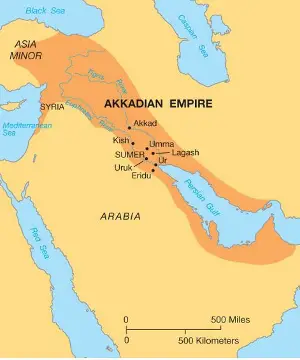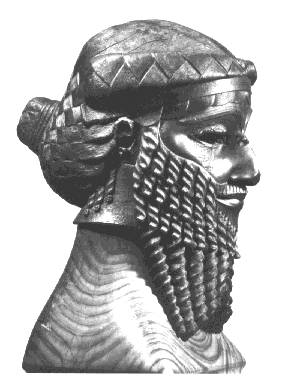The Akkadian Empire
The Akkadians were an ancient civilization in Mesopotamia who were a rival of and then a conqueror of the Sumerians. The most famous Akkadian was Sargon, the world's first emperor. In geographic opposition to the Sumerians, who lived in the south on the Euphrates River, the Akkadians lived farther north, along the Tigris River. Akkad was the primary city in the Akkadian civilization and gave the culture its name. Geography The Akkadians came into conflict with the Sumerians and ended up on top, absorbing that ancient progressive city into the Akkadian Empire. Other cities in the empire included these:

Economics
The Akkadians produced large amounts of foodstuffs and animal products (such as wool) but little else that they needed on a day-to-day basis. They were quite successful at exporting wheat and barley to neighboring civilizations, and they got from those neighbors other things that they needed, such as metal, stone, and timber. History and Government

Sargon first conquered Sumeria in 2340 B.C. He ruled for 35 more years, until his death in 2305. What followed was a series of clear successions: all but one of the subsequent rulers was the oldest son of the previous ruler. Sargon's oldest son, Rimush, succeeded his father; Rimush, in turn, was succeeded by his brother, Manishtushu. The most successful ruler was Sargon's grandson (and Manishtushu's oldest son) Naram-Sin. He was on the imperial throne for more than 50 years, ruling with an iron fist that put down revolts and pushed the empire's boundaries to its greatest extent. The large territory proved difficult to control as the years went by and the Sumerians learned some military skill of their own. Finally, in 2125, the Sumerians revolted as one, joining together to overthrow their conquerors. Shu-turul was the last Akkadian emperor. Leading the way in this reconquest was the city-state of Ur, which would become one of the world's leading centers of civilization. Invasions also came from the east, from a people known as the Guti. Akkad was conquered, replaced as the center of the empire. Even so, another neighbor would rise up and play the part of conqueror: the Amorites. Religion, Arts, and Culture

Art works were basic and depicted the rulers or the gods (some of whom were thought to be gods). The Akkadians created some of their own customs and adopted many Sumerian ones after the conquest. Both civilizations had their own language and, after the conquest, many people spoke both languages. A series of roads connected the cities and city-states of the empire. Deliveries for the official postal service progressed along these roads. |
|
Social Studies for Kids
copyright 2002–2024
David White




